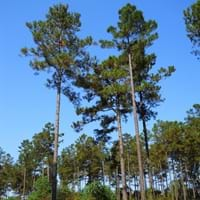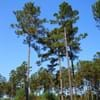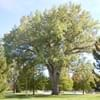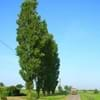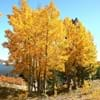Life Span
Perennial
Perennial
Type
Tree
Flowering Plants, Fruits, Trees
Origin
Southeastern United States
Central America, Europe, North America
Types
it is a variety of pine
Not Available
Habitat
Fields
Hedge, Scrubs, Woods
USDA Hardiness Zone
6-9
4-8
AHS Heat Zone
9-6
Not Available
Sunset Zone
H1
Not Available
Habit
Upright/Erect
Not Available
Flower Color
Not Available
White
Flower Color Modifier
Bicolor
Not Available
Leaf Color in Spring
Green
Dark Green
Leaf Color in Summer
Green
Green
Leaf Color in Fall
Green
Brown, Green, Light Yellow
Leaf Color in Winter
Green
Not Available
Leaf Shape
Needle like
Oblong
Plant Season
Spring, Summer, Fall, Winter
Summer
Sunlight
Full Sun, Partial Sun
Full Sun, Partial shade
Growth Rate
Very Fast
Medium
Type of Soil
Clay, Loam, Sand
Loamy
The pH of Soil
Acidic, Neutral
Neutral
Soil Drainage
Well drained
Well drained
Bloom Time
Not Available
Fall, Summer
Tolerances
Drought
Drought
Where to Plant?
Ground
Ground
How to Plant?
Seedlings, Transplanting
Grafting, Seedlings, Transplanting
Plant Maintenance
Medium
Medium
Watering Requirements
Do not let dry out between waterings, Requires a lot of watering
Medium
In Summer
Lots of watering
Lots of watering
In Spring
Ample Water
Moderate
In Winter
Lots of watering
Average Water
Soil pH
Acidic, Neutral
Neutral
Soil Type
Clay, Loam, Sand
Loamy
Soil Drainage Capacity
Well drained
Well drained
Sun Exposure
Full Sun, Partial Sun
Full Sun, Partial shade
Pruning
Prune to stimulate growth
Prune when plant is dormant, Remove dead or diseased plant parts
Fertilizers
All-Purpose Liquid Fertilizer, Apply 10-10-10 amount, High-phosphorous fertilizers used, organic fertlizers
All-Purpose Liquid Fertilizer
Pests and Diseases
Bark beetles, Beetles, Black root rot, Root rot
Aphids, Curculio occidentis, Japanese Beetles, Leaf Rollers, Leafminer, Mites, Red blotch, sawflies, Scale, Stink bugs
Plant Tolerance
Drought
Drought
Flower Petal Number
Not Available
Single
Fragrant Bark/Stem
Yes
No
Foliage Texture
Fine
Medium
Foliage Sheen
Matte
Matte
Attracts
Birds
Not Available
Allergy
Asthma, Skin rash
Digestive Problems, Respiratory problems
Aesthetic Uses
Showy Purposes
Showy Purposes
Beauty Benefits
Not Available
Beautiful Skin
Environmental Uses
Air purification
Food for birds
Medicinal Uses
No Medicinal Use
Anthelmintic, Antibacterial, Astringent, Hypnotic, Laxative, Refrigerant
Part of Plant Used
Stem
Fruits
Other Uses
used for making roof trusses, poles, joists, piles, Wood is used for making furniture
Edible syrup, Jam, Jelly, Used As Food
Used As Indoor Plant
No
No
Used As Outdoor Plant
Yes
Yes
Garden Design
Shade Trees, Street Trees
Not Available
Botanical Name
PINUS taeda
Malus sylvestris
Common Name
Loblolly Pine
European crab apple
In Hindi
loblolly pine
european crab apple
In German
Weihrauchkiefer
Der Holzapfel, Europäischer Wildapfel
In French
pin à encens
Le Boquettier, le Pommier sauvage ou Pommier des bois
In Spanish
pino taeda
Malus sylvestris, el Manzano silvestre, manzano silvestre europeo
In Greek
loblolly πεύκο
Ευρωπαϊκή μήλο καβουριών
In Portuguese
Pinus taeda
Malus sylvestris
In Polish
Loblolly sosna
Jabłoń dzika
In Latin
pinea taeda
european crab apple
Phylum
Coniferophyta
Magnoliophyta
Class
Pinopsida
Magnoliopsida
Clade
Not Available
Angiosperms, Eudicots, Rosids
Tribe
Not Available
Not Available
Subfamily
Not Available
Not Available
Number of Species
Not Available
Not Available
Properties of Loblolly Pine and European Crab Apple
Wondering what are the properties of Loblolly Pine and European Crab Apple? We provide you with everything About Loblolly Pine and European Crab Apple. Loblolly Pine doesn't have thorns and European Crab Apple doesn't have thorns. Also Loblolly Pine does not have fragrant flowers. Loblolly Pine has allergic reactions like Asthma and Skin rash and European Crab Apple has allergic reactions like Asthma and Skin rash. Compare all the properties and characteristics of these two plants. Find out which of these plant can be used as indoor plant. If you are interested to decorate your house and garden, find out aesthetic uses, compare them and select the plant which will beautify your surrounding. Along with beautification, try comparing medicinal and edible uses of Loblolly Pine and European Crab Apple and you can choose the plant having best and most benefits.
Season and Care of Loblolly Pine and European Crab Apple
Season and care of Loblolly Pine and European Crab Apple is important to know. While considering everything about Loblolly Pine and European Crab Apple Care, growing season is an essential factor. Loblolly Pine season is Spring, Summer, Fall and Winter and European Crab Apple season is Spring, Summer, Fall and Winter. The type of soil for Loblolly Pine is Clay, Loam, Sand and for European Crab Apple is Loamy while the PH of soil for Loblolly Pine is Acidic, Neutral and for European Crab Apple is Neutral.
Loblolly Pine and European Crab Apple Physical Information
Loblolly Pine and European Crab Apple physical information is very important for comparison. Loblolly Pine height is 1,830.00 cm and width 610.00 cm whereas European Crab Apple height is 25.00 cm and width 20.00 cm. The color specification of Loblolly Pine and European Crab Apple are as follows:
Loblolly Pine flower color: Not Available
Loblolly Pine leaf color: Green
European Crab Apple flower color: White
- European Crab Apple leaf color: Dark Green
Care of Loblolly Pine and European Crab Apple
Care of Loblolly Pine and European Crab Apple include pruning, fertilizers, watering etc. Loblolly Pine pruning is done Prune to stimulate growth and European Crab Apple pruning is done Prune when plant is dormant and Remove dead or diseased plant parts. In summer Loblolly Pine needs Lots of watering and in winter, it needs Lots of watering. Whereas, in summer European Crab Apple needs Lots of watering and in winter, it needs Average Water.
